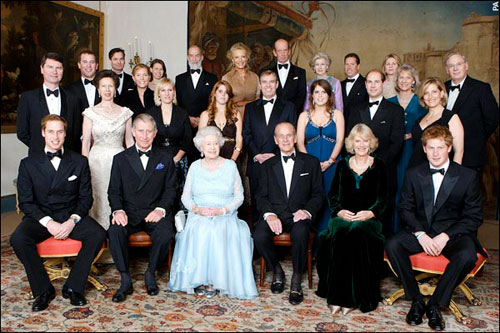Introduction

The British Royal Family is the family group of close relatives of the monarch of the United Kingdom. There is no strict legal or formal definition in the UK of who is or is not a member of the Royal Family, and different lists will include different people. However, those carrying the style Her or His Majesty (HM), or Her or His Royal Highness (HRH) are normally considered members. By this criterion, the Royal Family will usually include the monarch, the consort of the monarch, the widows and widowers of previous monarchs, the children and male-line grandchildren of the monarch and previous monarchs, the children of the oldest son of the Prince of Wales, and the wives or widows of the monarch's and previous monarchs' sons and male-line grandsons.
Different terms may be applied to the same or similar group of relatives of the monarch in his or her role as sovereign of any of the other Commonwealth realms. For example, for Canada the family is known as the Canadian Royal Family.
Some members of the Royal Family have official residences named as the places from which announcements are made in the Court Circular about official engagements they have carried out. The state duties and staff of some members of the Royal Family are funded from a parliamentary annuity, the amount of which is fully refunded by the Queen to the treasury.[1]
Since 1917, when King George V changed the name of the royal house from Saxe-Coburg and Gotha, members of the Royal Family belong, either by birth or marriage, to the House of Windsor. Senior titled members of the royal family do not usually use a surname, although since 1960 Mountbatten-Windsor (incorporating Prince Philip's adopted surname of Mountbatten) has been prescribed as a surname for Queen Elizabeth II's direct descendants who do not have royal styles and titles, and has also sometimes been used when required for those who do have such titles.